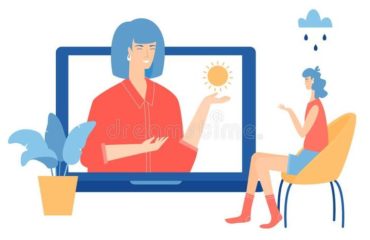
The pandemic has forced the world to work, socialize, and entertain themselves all through screens. Particularly, children have separated from their playgrounds and classrooms to remote technology. Digital evenings and Zoom classes beg the question: how much screen time is helpful?
The term “screen time” is unanimously tied to a need for its reduction. More often than not, it is thought of as harmful and unhealthy. It’s true that screen time can be harmful in some cases, especially when used excessively. Nevertheless, screen time in the pandemic and post-pandemic era will be unavoidable – and even more so, essential. Picking the right content is extremely important to make screen time productive and helpful. With proper steps, active screen time can truly help neurodiverse kids grow.
Why include screen time?
Before looking at constructive uses of the digital world, let’s ask ourselves – can screen time help neurodiverse kids grow? The answer to that is: yes! Thus, the key here lies in taking advantage of the reward system.
Most digital applications make the user want more. They are addictive by design. Our brains are biologically hardwired to release dopamine (a feel-good molecule), every time something new pops up. The tiny, consistent dopamine hits of digital mediums make them irresistible to people of all ages, particularly children. Further, in children with ADHD and autism, the dopamine system works erroneously, making them more vulnerable to crave the next dopamine hit.1-6 Digital devices offer a means to provide a high stimulation medium that they can enjoy, and potentially model from.
Caregivers can and should use this to their advantage. The introduction of constructive screen time can help uncover additional strategies that the caregiver can use to manage the kids’ life. And the kids won’t mind engaging at all! The only thing to be wary of here is to discourage media rabbit holes and encourage activities that reinforce real-life skills.
While excessive use is always harmful, judicious use promotes a responsible relationship with technology whilst engaging a neurodiverse child.
Constructive uses of screen time
Now that we know why it’s helpful, let’s look at some ways digital devices can help:
- Personalized learning systems
The learning styles of neurodiverse children can be offbeat and incompatible with the regular schooling system. Several digital tools exist, however, that can be used to provide them with an ideal learning system. In fact, the digital medium provides a lot of versatility to the learning process, being as flexible as one can imagine it to be. Specific struggles like speech problems or social skills development can be improved using specialized apps and websites built for this purpose. Further, personalized special education can be accessed online as well in case it is not possible (or preferred) physically.
- Promoting creativity over consumption
While using such devices, neurodiverse learners can be indulged in fun, creative activities that do not involve passive consumption of content. This can be done by making the offerings interactive (a Q&A video, for example), or indulging in creative games like Scrabble. Such modifications help immensely with cognitive and social development as well.6-8
- Finding peers to relate to
Feeling isolated can often be a part of the experience. Neurodiverse kids may find it hard to relate to neurotypical peers, face rejection and bullying, or simply feel too “different” to engage in a satisfying way. Albeit with strict supervision and through safe social media platforms, these children can find peers they can relate to and form more personal connections with.
The biggest benefit of introducing screen time
The physical world is often not a very comfortable space for many neurodiverse individuals with cognitive differences where sensory overload can lead to a sense of overwhelm, if not complete meltdowns. Social situations and taking care of oneself outside one’s comfort zone can be hard. Thus, it can be difficult for these kids to acquaint themselves with the real world and the enriching experiences it can offer.
The digital world, instead, provides a space where children can expose themselves to new experiences that might make them anxious otherwise. The possibilities are endless: from watching a nature documentary without sound (instead of going to the zoo) to using video chat for social interactions. Therefore, the omnipresence of screens allows the safe exploration of real-world scenarios. The digital world is an efficient gateway to an array of new experiences minus the sensory overload. It acts as a buffer to balance the amount of information and sensory stimulation received.
Teletherapy: an extension of this benefit
Compared to real-life situations, the virtual world is a safer space for neurodiverse children. Now, in the case of therapy and/or counselling, the same disadvantages apply. Going to an appointment physically is a lot of additional stress, involving noisy, unfamiliar, uncomfortable, and potentially stress-inducing environments. In the case of teletherapy, one can completely avoid such issues.
Children can engage with their therapist from the comfort of their home in an environment tailored for their own needs. Various digital tools in the therapy regime can make it more efficient and memorable.
- Using Avatars for screentime
Building on these benefits, Avatar Adventures includes trained professionals controlling live, animated, and interactive avatars for the 360° development of neurodiverse learners. A fun learning experience, it engages and attracts more than a serious therapeutic environment with person-to-person contact, and has shown significant improvements in children with autism.
In conclusion, screen time is an opportunity to take a neurodiverse child on an educational, entertaining journey, while maintaining a safer space to do so.
References
- https://www.theatlantic.com/health/archive/2017/03/autism-and-addiction/518289/
- https://www.psychologytoday.com/us/blog/mental-wealth/201612/autism-and-screen-time-special-brains-special-risks
- https://www.ncbi.nlm.nih.gov/pmc/articles/PMC5517818/
- https://www.additudemag.com/adhd-adult-diagnosis-distraction-phone/
- https://www.researchgate.net/publication/228471237_Influence_of_dopaminergic_system_on_internet_addiction
- https://cdikids.org/autism/rethinking-the-use-of-technology-for-our-children/
- https://medicine.yale.edu/childstudy/news-article/15234/
- https://www.ncbi.nlm.nih.gov/pmc/articles/PMC6579611/




You must be logged in to post a comment.